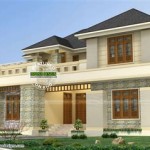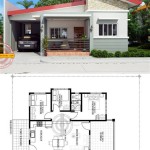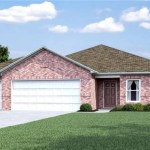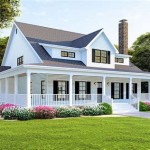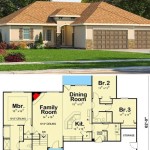Open Floor Plans in Modular Homes: A Fusion of Design and Efficiency
The convergence of open floor plans and modular home construction presents a compelling solution for modern homeowners seeking spacious, adaptable, and cost-effective living spaces. Historically, modular homes have been associated with standardized designs. However, advancements in construction techniques and design flexibility have revolutionized the industry, enabling the seamless integration of open floor plans into modular structures. This article will explore the benefits, considerations, and design possibilities associated with open floor plans in modular homes.
Modular construction, characterized by building components in a controlled factory environment, offers numerous advantages over traditional stick-built methods. These advantages include reduced construction time, improved quality control, and minimized material waste. By prefabricating sections of the home, manufacturers can adhere to stringent quality standards and mitigate the impact of weather delays, resulting in a faster and more predictable building process. Furthermore, the controlled environment allows for more precise material usage, contributing to cost savings and environmental responsibility.
An open floor plan, in its most basic definition, combines multiple traditionally separated rooms – such as the living room, dining room, and kitchen – into a single, expansive area. This design philosophy prioritizes flow, natural light, and social interaction within the living space. Open floor plans are particularly appealing to individuals and families who value a sense of connectedness and wish to create a more communal atmosphere in their homes. The absence of dividing walls fosters a feeling of spaciousness and allows for greater flexibility in furniture arrangement and usage.
The Benefits of Open Floor Plans in Modular Homes
The synergy between open floor plans and modular construction offers a range of distinct advantages. These include optimized space utilization, enhanced natural light, and increased design flexibility.
One of the primary benefits is efficient space utilization. In traditional homes, walls and hallways can consume a significant portion of the total square footage. Open floor plans eliminate these barriers, maximizing the usable living area. This is particularly beneficial in smaller homes, where every square foot counts. By combining multiple functions into a single, flowing space, homeowners can create a sense of spaciousness and avoid the feeling of being cramped.
Another key advantage is improved natural light distribution. With fewer walls obstructing the flow of light, natural illumination can penetrate deeper into the home. This reduces the need for artificial lighting, conserving energy and creating a brighter, more inviting atmosphere. Larger windows and strategically placed skylights can further enhance the effect, bringing the outdoors in and blurring the lines between the interior and exterior environments.
Finally, open floor plans in modular homes offer considerable design flexibility. While modular construction involves prefabricated components, it does not necessarily limit design choices. Modern modular manufacturers offer a wide array of customizable options, allowing homeowners to tailor their open floor plans to their specific needs and preferences. This includes choices in flooring, cabinetry, countertops, and lighting fixtures, ensuring that the finished product reflects the homeowner's personal style.
Considerations for Designing Open Floor Plans in Modular Homes
While open floor plans offer numerous advantages, careful planning and consideration are crucial to ensure a successful outcome. Acoustic management, zoning strategies, and structural integrity must be addressed effectively.
Acoustic management is a significant consideration in open floor plans. The absence of walls can lead to sound traveling freely throughout the space, potentially creating distractions and reducing privacy. To mitigate this issue, various strategies can be employed. These include incorporating sound-absorbing materials such as acoustic panels, rugs, and upholstered furniture. Strategic placement of furniture can also help to dampen sound and create quieter zones within the open space. Furthermore, carefully selecting appliances with low noise ratings can contribute to a more peaceful living environment.
Zoning is another critical aspect of designing open floor plans. While the absence of walls creates a sense of flow, it is important to define distinct areas for different activities. This can be achieved through the use of furniture arrangements, changes in flooring materials, or the strategic placement of lighting fixtures. For example, a large area rug can define the living room space, while a kitchen island can separate the cooking area from the dining area. Thoughtful zoning helps to create a sense of order and allows for different activities to occur simultaneously without disrupting the flow of the space.
Structural integrity is a paramount concern in any construction project, and modular homes with open floor plans are no exception. The removal of load-bearing walls requires careful engineering and design to ensure the stability and safety of the structure. Modular manufacturers employ skilled engineers who utilize advanced software and techniques to determine the optimal placement of supporting beams and columns. These structural elements are carefully integrated into the design to provide the necessary support without compromising the open feel of the space. Furthermore, modular construction adheres to strict building codes and regulations, ensuring that all structural components meet or exceed industry standards.
Design Possibilities for Open Floor Plans in Modular Homes
The design possibilities for open floor plans in modular homes are virtually limitless. From contemporary minimalist designs to rustic farmhouse aesthetics, modular construction can accommodate a wide range of styles and preferences.
Contemporary minimalist designs often feature clean lines, neutral color palettes, and minimal ornamentation. In an open floor plan, this translates to a spacious, uncluttered environment with a focus on functionality and simplicity. Large windows and sliding glass doors maximize natural light and create a seamless connection to the outdoors. Minimalist furniture with clean silhouettes and neutral fabrics complements the overall aesthetic. Strategic use of lighting fixtures and artwork adds subtle visual interest without detracting from the overall sense of calm and serenity.
Rustic farmhouse aesthetics, on the other hand, embrace warmth, texture, and natural materials. In an open floor plan, this can be achieved through the incorporation of exposed wood beams, shiplap walls, and reclaimed wood flooring. A large farmhouse-style kitchen island serves as a focal point, providing ample space for food preparation and gathering. Comfortable upholstered furniture in warm colors and patterns adds to the inviting atmosphere. Decorative elements such as vintage signs, antique lighting fixtures, and handcrafted accessories complete the rustic farmhouse look.
Beyond these two examples, a multitude of other design styles can be seamlessly integrated into open floor plans in modular homes. Coastal-inspired designs can incorporate light and airy colors, natural textures, and nautical accents. Mid-century modern designs can feature clean lines, geometric patterns, and vibrant colors. Ultimately, the design possibilities are limited only by the homeowner's imagination and preferences. Modular manufacturers offer a wide range of customizable options, allowing homeowners to create a truly unique and personalized living space.
The integration of smart home technology can further enhance the functionality and convenience of open floor plans in modular homes. Smart lighting systems allow for automated lighting control and energy savings. Smart thermostats provide precise temperature regulation and remote access. Smart appliances offer advanced features and connectivity. These technologies can be seamlessly integrated into the design, creating a modern and efficient living environment.
In conclusion, the combination of open floor plans and modular construction presents a compelling solution for modern homeowners seeking spacious, adaptable, and cost-effective living spaces. By carefully considering the benefits, challenges, and design possibilities, homeowners can create a beautiful and functional modular home that perfectly suits their needs and lifestyle. The flexibility and efficiency of modular construction, coupled with the openness and connectivity of open floor plans, offer a winning combination for contemporary living.

5 Advantages Of An Open Floorplan In A Modular Home Next

Ranch Style Modular Homes Will Enhance Your Single Story Home Living Experience And Space Descr House Plans One Open Floor

The Ranch Style Modular Home That Is Ideal For Starting Families Lincolnton Nc

Manufactured Homes With Drywall L Clayton Studio

This Prefab Modular Home Includes An Open Floor Plan Arched Ceiling With Curved Pinewood Walls Yanko Design

Prefab Home Trends New And Popular Kintner Modular Builder Pennsylvania Quality Contractor

Bexar Floor Plans In Modular Homes Austin

Top Five Most Popular Modular Home Floor Plans

Modular Homes Open Floor Plan Photos Plans Architecture Collections Concept F Home New House Barndominium

Jamestown Iii By Wardcraft Homes Ranch Floorplan

